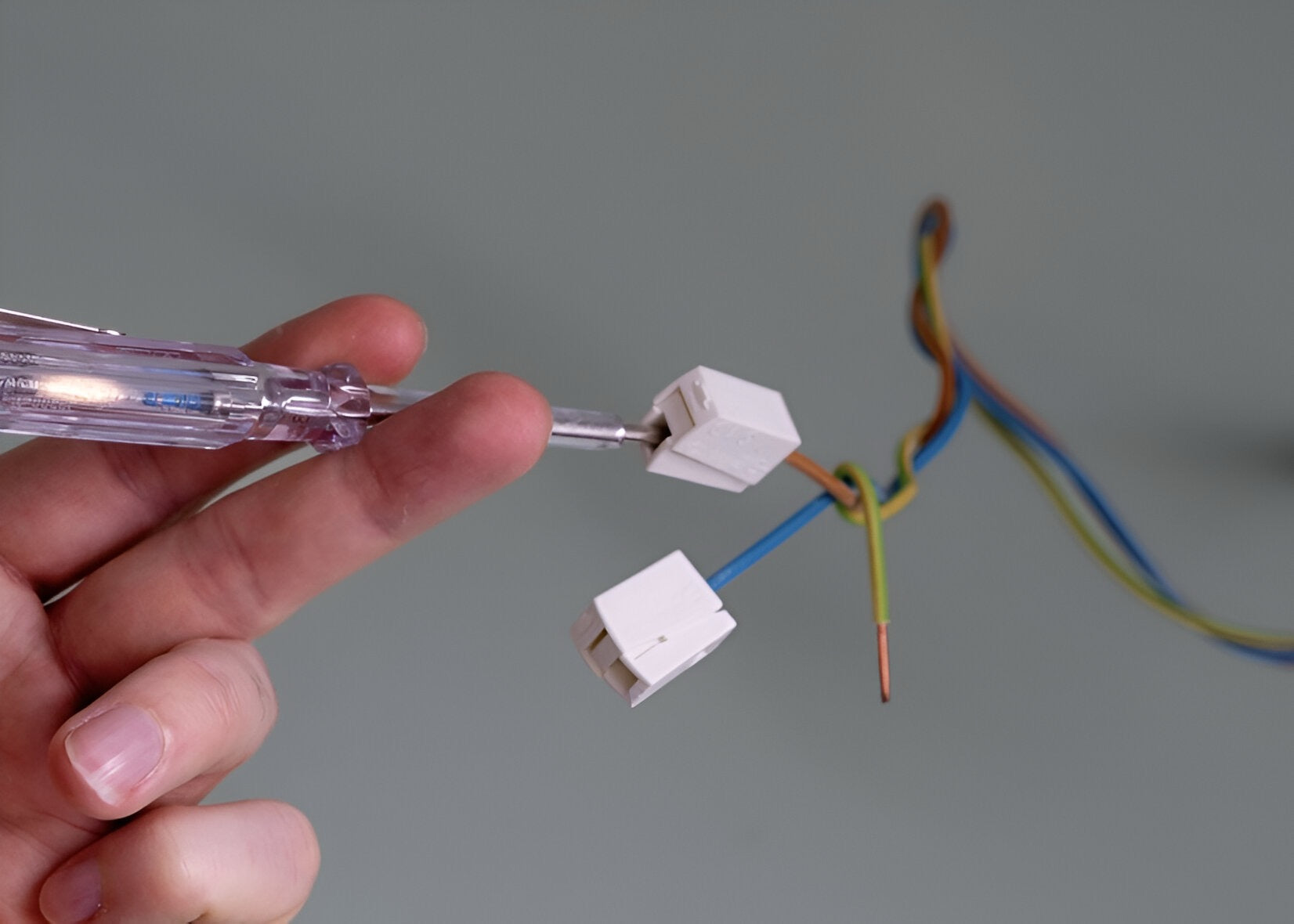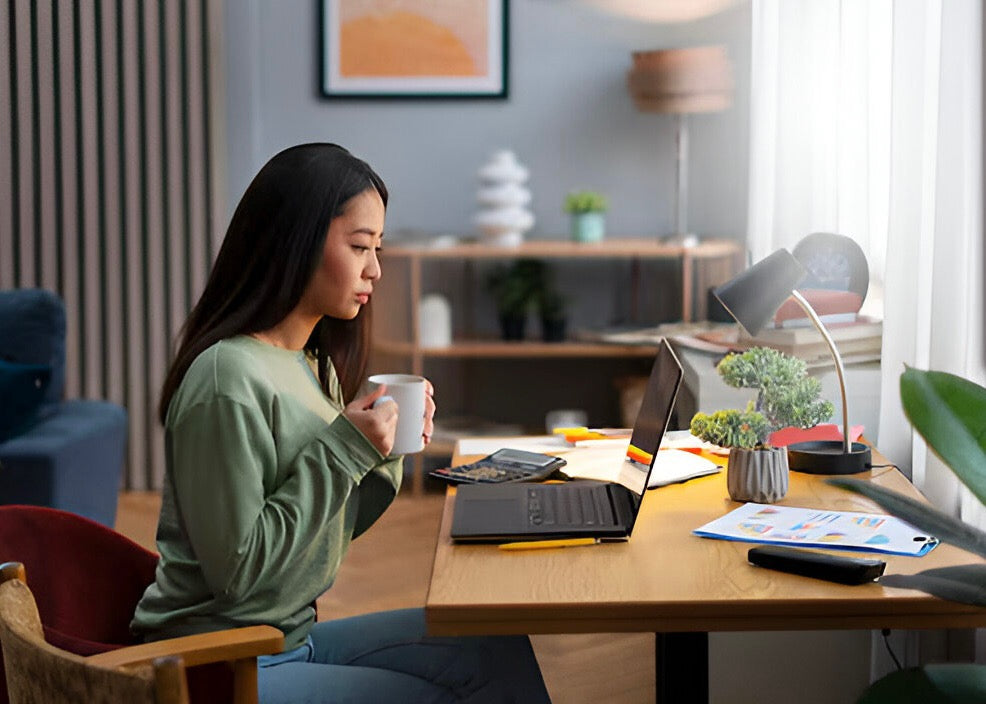Have you bought a new lamp and want to connect it yourself, but are unsure? No worries! With the right instructions, connecting a ceiling or wall light is possible even for beginners. We'll show you step by step how to safely connect a lamp, which cables you need to connect and what you should definitely pay attention to.
When moving or after a renovation, you are often faced with the same question: How do I connect the new lamp correctly? Many people don't want to call an electrician and do the installation themselves. So that you don't have any unpleasant surprises, we will explain all the important steps to you in this article - simply and understandably.
Why you need to be careful when connecting lamps
Electricity is not a toy! Even small mistakes can be dangerous and, in the worst case, lead to an electric shock or fire. That's why: Safety has top priority. Anyone who wants to connect a lamp should know exactly what they are doing.
The good news: With a little know-how, the right preparation and these instructions, you can do it yourself - even as a beginner.
Which cables belong where? (colors explained)
When connecting a lamp, you almost always come across three cables. The colors will help you connect them correctly:
- Black or Brown = Phase (L) → carries the current.
- Blue = neutral conductor (N) → closes the circuit.
- Yellow-green = protective conductor (PE) → ensures safety.
Note: Brown/black for the lamp, blue too, and yellow-green is the protection.
💡 Additional tip:
Color standards are sometimes missing in old houses. So be sure to use one Voltage testerbefore connecting cables. This way you avoid dangerous mix-ups.
Step-by-step instructions: Connect the lamp securely
Follow these steps if you want to connect your lamp:
1. Switch off the power!
Before you get started, turn off the fuse in the fuse box. Use a voltage tester to check whether there is really no more current on the line.
2. Remove old lamp
Unscrew the old lamp and carefully release the cables from the clamp. Be careful not to damage the cables.
3. Prepare cables
Check the cable ends. If necessary, re-insulate 0.5-1 cm. Bend the ends straight so that they fit tightly into the luster terminal.
4. Connect cable correctly
Connect the lamp cables to the ceiling cables:
- Brown/Black (Lamp) → Brown/Black (Ceiling)
- Blue (lamp) → Blue (ceiling)
- Yellow-green (lamp) → yellow-green (ceiling)
💡 Additional tip:
Use modern Plug-in terminals instead of classic luster terminals. They are safer and prevent loose contacts that can cause flickering later.
5. Attach the lamp
Screw or clamp the lamp to the designated bracket on the ceiling or wall. Make sure you have a secure hold - especially with heavy models.
6. Testing
Turn the power back on and check if the lamp works. If not: turn the fuse off again, check the cable connections.
Typical lamp connection problems – and how to solve them
Problem: Lamp doesn't light
➡️ Cause: Cable not connected properly or fuse broken.
➡️ Solution: Check cable connections, check fuse.
Problem: Lamp flickers
➡️ Cause: Poor contact, loose socket or defective bulb.
➡️ Solution: Tighten the socket, insert a new bulb.
Problem: There are only two cables in the ceiling
➡️ Cause: Old houses often have no protective conductor.
➡️ Solution: Lamp can still be connected, but pay attention to safety. If you are unsure: call an electrician!
Problem: Lamp gets hot
➡️ Cause: Incorrect bulb or too high wattage.
➡️ Solution: Only use the recommended wattage - preferably LED, as they hardly generate any heat.
Common mistakes when connecting a lamp
- ❌ Power not switched off – highest risk!
- ❌ Phase and neutral conductors swapped.
- ❌ Cable ends stripped too short – can slip out.
- ❌ Lamp attached to dowels that are too weak – risk of falling.
💡 Additional tip:
Mark cables with small ones Cable clips or labelsif there are several cables in the ceiling. This saves time and prevents mix-ups.
Safety tips for beginners
- Always turn off the power at the fuse box.
- Only use intact cables and lamps.
- Don't have wet hands when working.
- Use insulated tools.
- If you are unsure: hire an electrician.
Pro tip: Connect smart lamps
If you are modern Smart home lamps If you want to install it, the connection works in the same way as with classic models. The difference: Many smart lights offer additional functions such as dimmers, app control or color changing. Make sure you have stable power lines and a good WiFi signal at the installation site.
Conclusion
Connecting a lamp yourself is not that difficult if you know the basics. With the right preparation, a little caution and these instructions, even beginners can do it. You save money, remain flexible and can use your new lamps immediately.
Discover suitable ones now Lamps in our online shop – from modern ceiling lights to extravagant pendant lights. Our customer service will be happy to help you if you have any questions about assembly.



